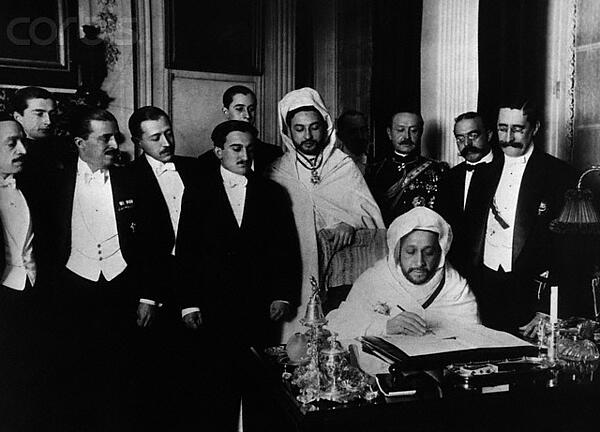The Algeciras Conference of 1906
The purpose of the Algeciras Conference of 1906 was to settle a dispute between France and Germany about the situation in Morocco. The conference in Algeciras, Spain, was the result of the First Moroccan Crisis. All of the major European powers gathered on 16 January for the start of the conference. The dispute was eventually resolved with the Act of Algeciras which opened Moroccan trade to all nations. However, the conference was a sign of larger tensions within Europe and it worked to drive France and Britain even closer together.
The two main subjects of the Algeciras Conference were France and Germany. The support for each nation was very unbalanced, with Britain, Spain and Italy siding with France. So before the conference they had already organised the plan for Morocco, including which European country would govern each city. Tangier was to be governed by a Franco-Spanish military force. The Germans were angry about their exclusion from these discussions.
However, Wilhelm had a different plan. He wanted to bring France into an alliance by agreeing to French demands in Morocco. WIlhelm also hoped that Russia could join the alliance. Russia had lost a war to Japan and been ravaged by the 1905 Revolution, so Wilhelm believed that Tsar Nicholas II would want to be seen as a ‘big player’.

The aim of these diplomatic maneuvers was to isolate Germany’s biggest rival - Britain. By allying with France and Russia, it was hoped that Germany would force Britain to join with Spain and Italy – neither of whom were seen as major powers.
The Algeciras Conference is significant because it shows the importance of alliance before World War One. Power relations became more important than Morocco.
On paper, Wilhelm’s plan of a triple alliance made sense as it would diplomatically isolate Britain. However, the plan had two weaknesses. The first was the constant lack of trust between the players. Only the year before France had been threatened by Germany in the Moroccan Crisis, now she was seeking an alliance. This political maneuvering led to a deep mistrust among the great powers. Great Britain was seen as a second witness. The British Foreign Secretary, Sir Edward Grey, had a great knowledge of German foreign policy.
Jules Cambon, the French ambassador in London told Paris that Britain would give France her support during negotiations at Algeciras after realising that Germany’s plans would be bad for Britain.
The conference did not run smoothly. It was divided into three groups: France, Britain, Russia and Spain on one side and Austria-Hungary and Italy on the other. Germany, however, was isolated. It was clear that Wilhelm’s plan would not work.
On 27 March 1906, Germany accepted Austria’s suggestion that the French and Spanish should police the ports in Morocco. A Swiss inspector would then oversee their work and report to the Sultan. The Algeciras Conference ended on 7 April 1906.
The Germans gained little from the conference. It failed in its plan to create a triple alliance to isolate Great Britain failed. Moreover, it pushed Britain and France together. There was also no German presence in Africa. The Germans blamed von Bulow for the failure in allowing Britain and France to come out on top. The German High Command altered the Schlieffen Plan and encouraged the German government to take a more aggressive stance.
The most significant outcome of the Algeciras Conference was not resolving the Moroccan problem, but its role in dividing Europe into three camps.
See also: The Agadir Crisis of 1911
MLA Citation/Reference
"The Algeciras Conference of 1906". HistoryLearning.com. 2026. Web.
